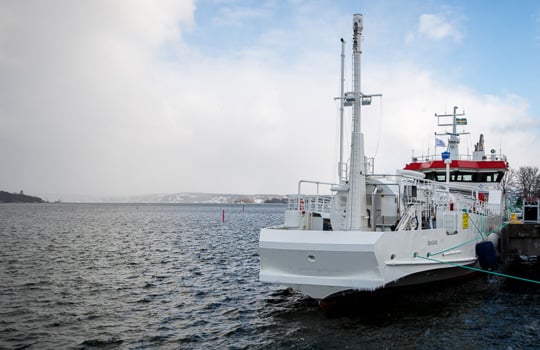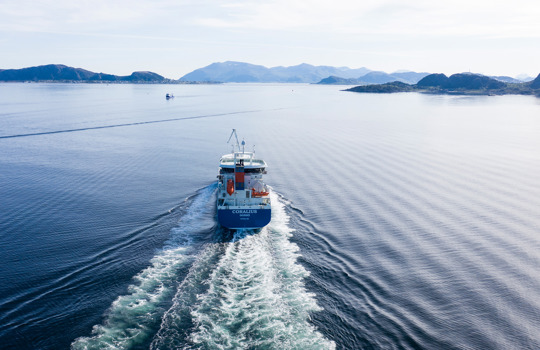LNG as maritime fuel is an investment for the future
Even though switching from conventional maritime fuels to LNG means making investments, it is a sustainable choice in terms of the environment and the business. During 2021, an increasing number of companies from different industries have announced targets for lowering their cargo-based emissions. In the long run, shipping companies need to decarbonise to win cargo deals.
In October 2021, nine major companies, including Amazon, Unilever, Ikea, and Inditex, made a pledge that by 2040 they will be using only zero-carbon shipping in moving their cargo. The project facilitated by The Aspen Institute aims to accelerate the decarbonisation of the shipping industry.
As much as 90% of world’s cargo is moved by sea. Maritime shipping produces 3% of the world’s CO2-emissions and 10–15% of the world’s sulphur oxides (SOx) and nitrogen oxides (NOx), both of which are dangerous to human health.
Conventional fuels are cheaper, but cost more in the long run
Liquefied natural gas (LNG) is currently the only way to effectively lower maritime emissions. It also enables the transition to renewable liquefied biogas (LBG) and eventually to carbon-free synthetic LNG.
However, the transition requires shipping companies to want to make investments for a sustainable business and cleaner shipping, even though results might not materialize immediately. For the time being, vessels using conventional fuels might seem like a safe option for shipping companies because they are more familiar and cheaper than LNG ships – at least for now.
“Shipping companies should note that demands for carbon-neutral shipping from their potential customers have clearly been on the rise recently. In a decade, shipping companies that are still using only conventional fuels might not be able to sign profitable cargo deals because they can’t meet the emission targets of the customers. This might lead to a situation where ships running on conventional fuels become stranded assets as they don’t meet the customers’ criteria,” tells Jacob Granqvist, Vice President of Gasum Maritime.
The pledge for zero-carbon shipping made by Amazon and other retail companies has made the shift in shipping customer’s climate targets visible but the change is happening also in steel and forest industries.
Dual fuel propulsion gives shipping companies more leeway
During the year 2021, the number of LNG-fuelled newbuilding orders was nearly 30% of the gross-tonnage of all the ordered vessels (External source;SEA-LNG). Most of the newbuilds were dual fuel, meaning they can use both LNG and conventional fuel or electricity.
Whereas dual fuel ships can use different fuel options available today and in the future with the same infrastructure, the ships with propulsion supporting only conventional fuels seem to be in a dead-end when considering future fuel options.
“Biodiesel isn’t interchangeable with conventional fuels such as heavy fuel oil. In the worst-case scenario using it on a conventional fuelled vessel can bring the vessel to a halt. In addition to LNG, LBG, and synthetic natural gas, or SNG being interchangeable, the dual fuel solution shields the shipping companies from price variation as there is always an option to temporarily use conventional fuels,” explains Granqvist.



